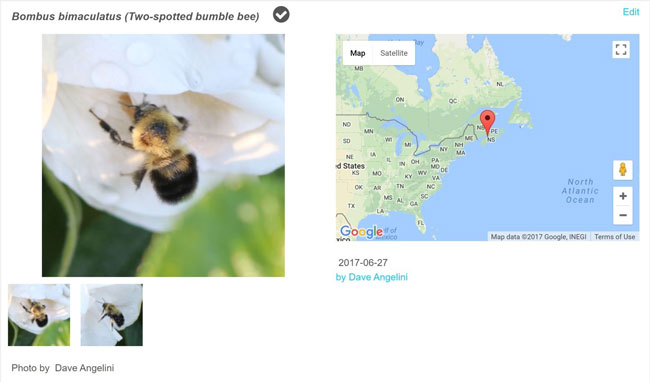How can researchers be in more than one place at a time? By mobilizing a network of volunteers with cameras! One of the powerful aspects of Bumble Bee Watch, a community science project that allows contributors to record bumble bee observations, is that participants submit records of bumble bees from across North America including in areas not often surveyed by researchers.
This fall, after researchers verified many of the bumble bee observations, particularly from Eastern Canada, they were excited to find records of the two-spotted bumble bee (Bombus bimaculatus). This species is recognizable by two spots of yellow hair (or alternatively a “w” or “chisel” shape) on the second band on the abdomen of a bee. Past range maps for this species included the central and eastern part of the United States and Ontario and the extreme south of Quebec. Now, a map of the records submitted to Bumble Bee Watch for the two-spotted bumble bee clearly show an expanded presence in Quebec, records in all three Canadian Maritime provinces, and a westward push into the prairies!

It is not clear if this species has recently expanded its range into these provinces, or if it is the increase in survey efforts resulting in the new finds. Interestingly, the relative abundance of the two-spotted bumble bee ranges from 3–6% in the Maritimes, 8% in Quebec, 10% in Ontario, and 8–24% in the Prairies according to the data we have verified to date in Bumble Bee Watch. Regardless as to the reason for the bees now being found in new areas, it is an example of how by submitting photos you can have a direct impact on even our basic knowledge of bumble bees. Keep up the great work everyone!

by Victoria MacPhail, York University



